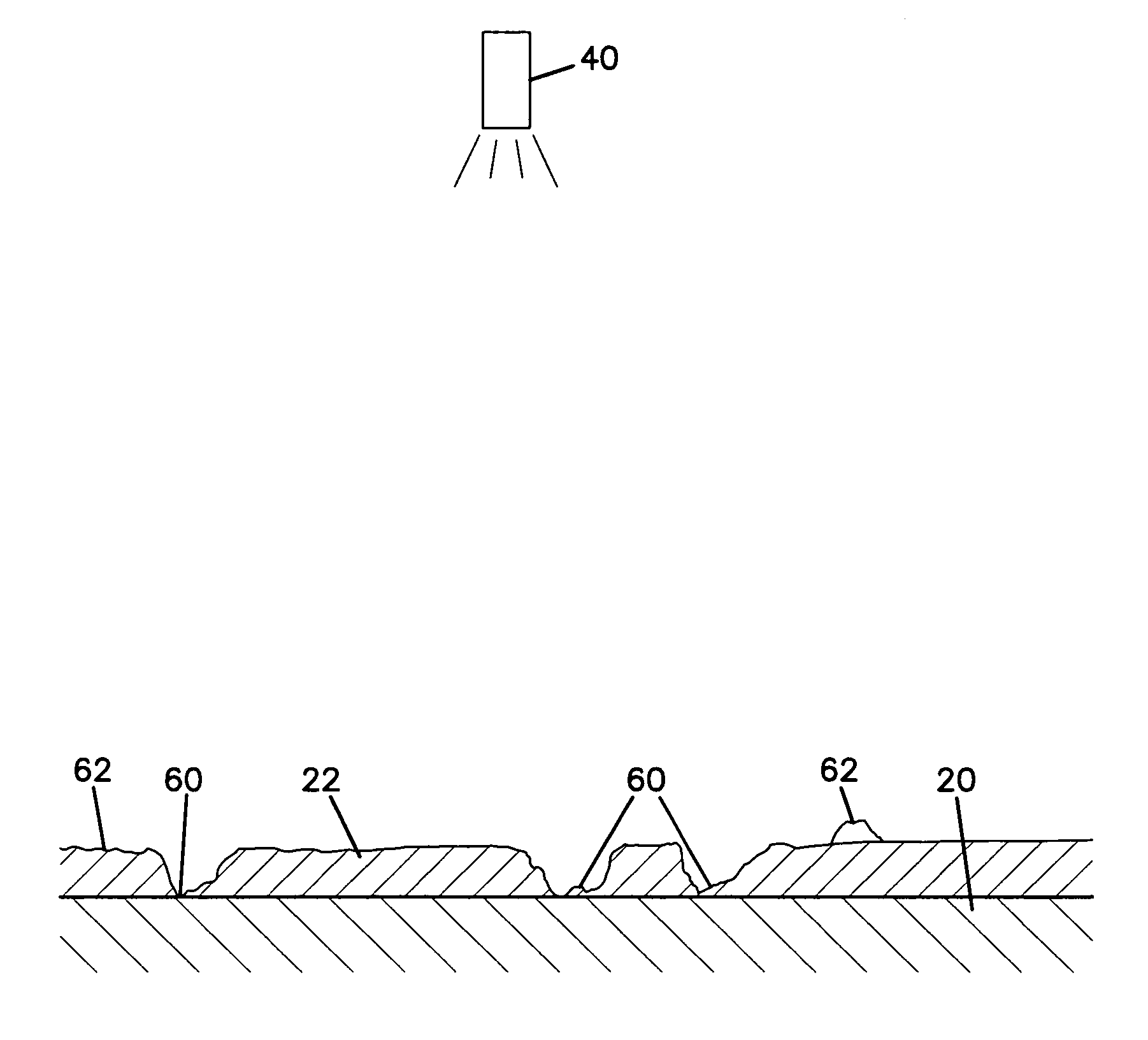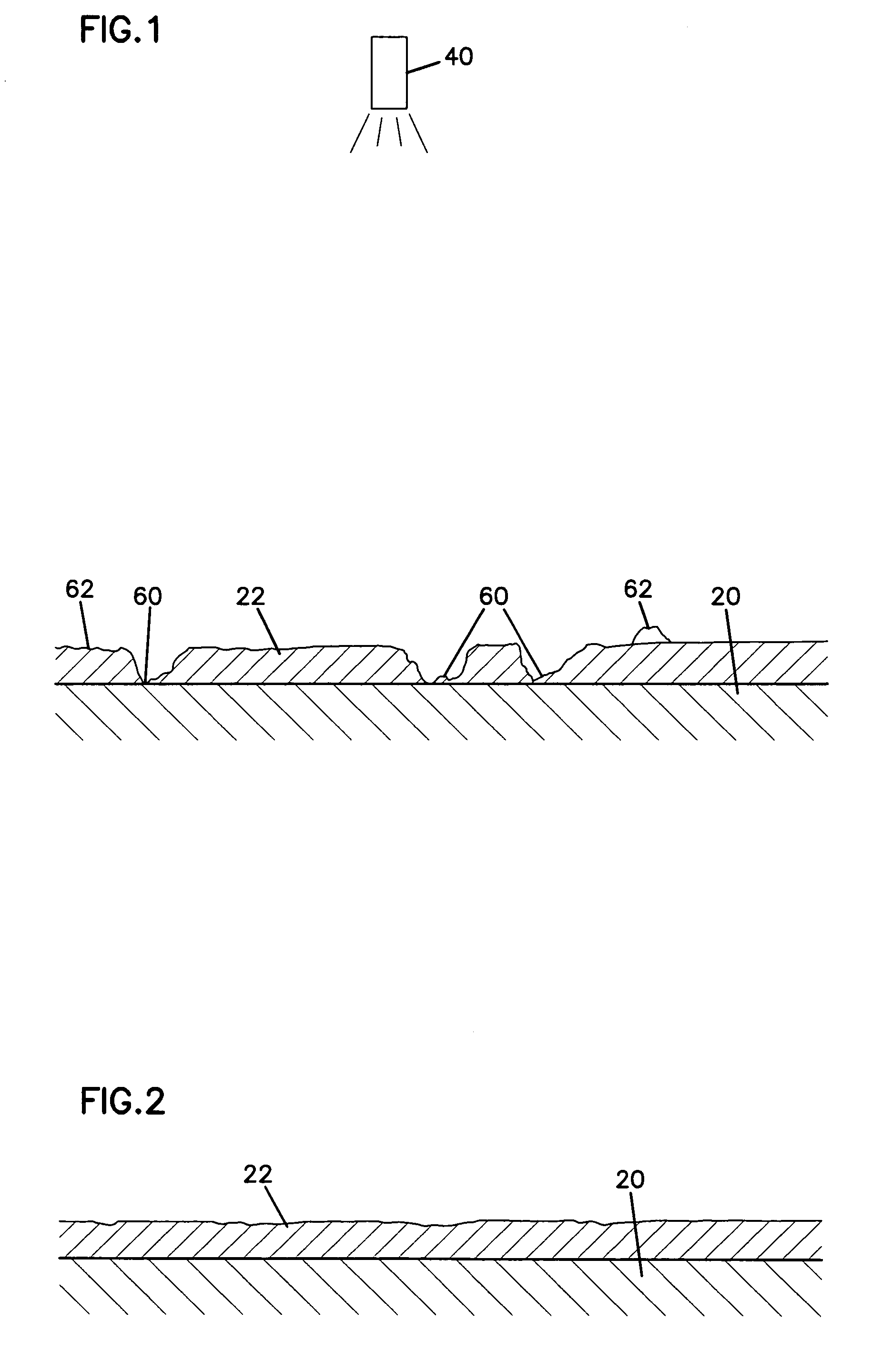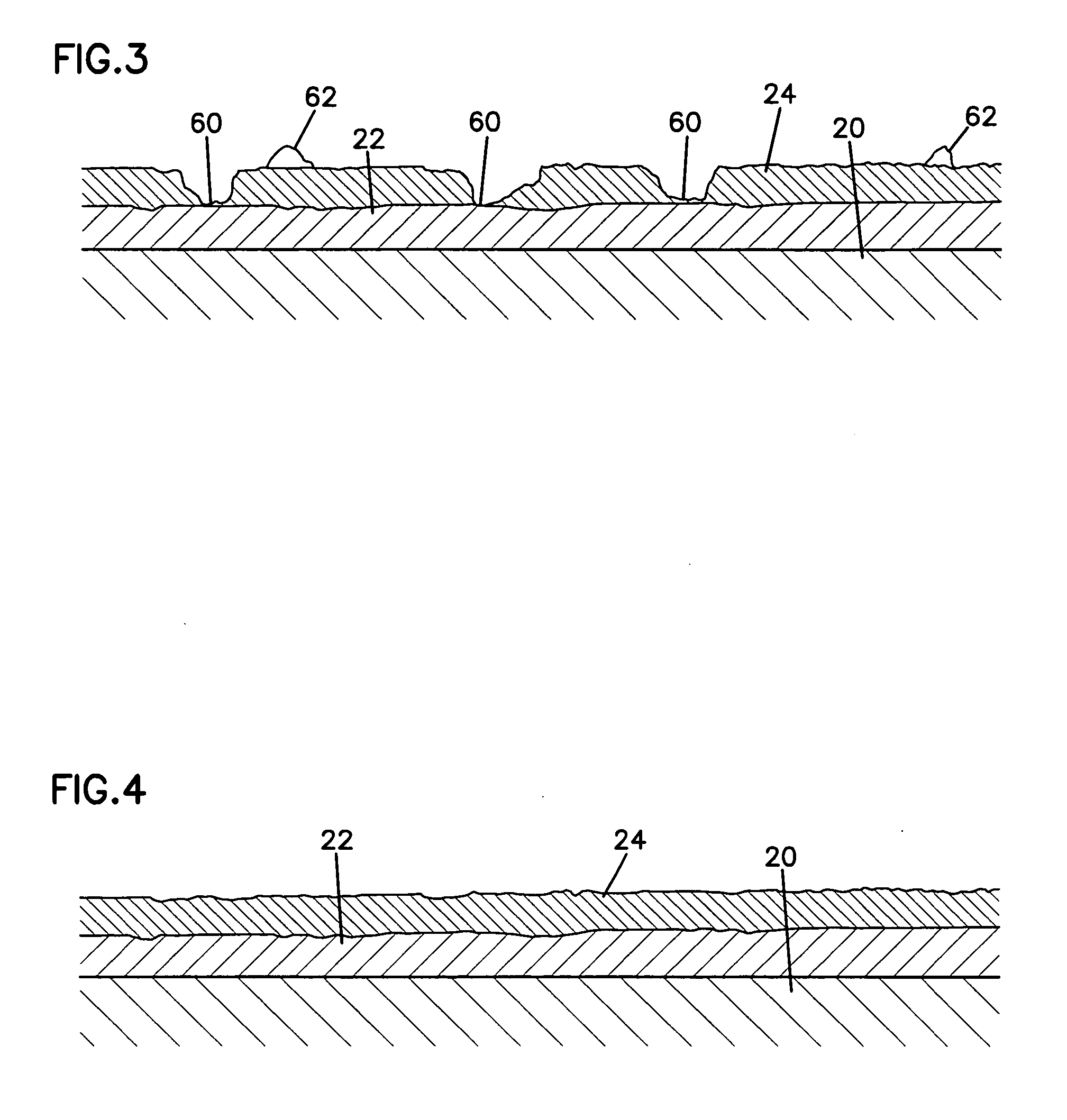Luminescent coating
- Summary
- Abstract
- Description
- Claims
- Application Information
AI Technical Summary
Benefits of technology
Problems solved by technology
Method used
Image
Examples
Embodiment Construction
[0030] Referring now to the drawings, and in particular FIG. 1, there is shown a surface or substrate 20 having a first protective coating 22 applied thereto. The coating 22 may be a coating of paint, sealant or other protective layer. The composition of the coating 22 preferably includes an optically activated additive (OAA) such as a luminescent additive acting as a visual indicator in selected types of light such as ultraviolet.
[0031] According to one aspect of the invention shown in FIG. 10, inspection occurs with a projector 40, a camera 42, preferably a digital camera, and a light meter 44, measuring light emitted from the projector 40. The camera 42 and light meter are preferably positioned a predetermined distance D from the first coating 22 so that its thickness may be determined with great precision.
[0032] Prior to coating, for example, a ship's ballast tank, a proprietary paint suitable for the application, typically a marine grade epoxy based paint for such a use, has ...
PUM
| Property | Measurement | Unit |
|---|---|---|
| Percent by mass | aaaaa | aaaaa |
| Color | aaaaa | aaaaa |
| Concentration | aaaaa | aaaaa |
Abstract
Description
Claims
Application Information
 Login to View More
Login to View More - R&D
- Intellectual Property
- Life Sciences
- Materials
- Tech Scout
- Unparalleled Data Quality
- Higher Quality Content
- 60% Fewer Hallucinations
Browse by: Latest US Patents, China's latest patents, Technical Efficacy Thesaurus, Application Domain, Technology Topic, Popular Technical Reports.
© 2025 PatSnap. All rights reserved.Legal|Privacy policy|Modern Slavery Act Transparency Statement|Sitemap|About US| Contact US: help@patsnap.com



